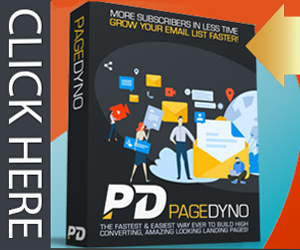‘Inside Google: a former Google web-spam team member gives tips’ – ‘Axandra Search Engine Facts’
The latest issue of ‘Axandra Weekly Search Engine Facts’ has been released. The featured article titled “Inside Google: a former Google web-spam team member gives tips”.
Inside Google: a former Google web-spam team member gives tips
In an interview, former Google web-spam member Andre Weyher gave more information about the way Google detects web spam. The most important facts and statements can be found in this article.
1. How does Google detect web spam?
In addition to the on-page signals, Google uses the backlink profile of a web page to detect spam. Google analyzes many different backlink elements: how many links are there in total? What is the quality of the pages they come in from? Do the pages look “real” or are they just there to host the links? What anchors texts are used? The commercial vs. non commercial ratio of the anchor texts.
2. What are commercial keywords and how do they influence your backlink profile?
If 90% of the anchor texts in a backlink profile are commercial keywords, it is likely that the backlinks are spammy, especially if there are thousands of these links.
Andre says that a natural backlink profile usually has non-commercial keywords in the anchor texts (long tail keywords, the URL of the website, etc.)
3. On-page optimization is a key element of any SEO strategy
“On-page tactics are often overlooked, while in reality they should be a key element in your SEO strategy. […]
Be very thorough about your basic elements like titles, descriptions and H1/H2 headers. People are so focused on putting the most expensive fuel in their car (link building) that they totally forget about the basics like putting wheels on it (on page elements).”
IBP’s Top 10 Optimizer is the perfect tool that helps you to optimize all on-page signals of your web pages.
4. Which link building techniques work with Google?
“If your website is about cheese production, reach out to people in the milk industry, like I mentioned before, relevance is the new PageRank.”
Andre also says that you shouldn’t dismiss directories completely. Good quality, moderated directories, or niche directories are still worth looking in to. The quality of the pages that link to your site is also important. Three links from authentic pages will do much more than 1000 links from spam blogs. Quality is more important than quantity.
The link building tool in IBP will help you to find high quality websites. It also helps you to keep track of your link building activities.
If you are a regular reader of our weekly newsletter, the above won’t come as a surprise to you. Andre Weyher confirms the tactics and methods that we’ve been recommending for years.
If you’ve used IBP in the past to promote your website, chances are that your rankings are better than ever before. If you haven’t used IBP yet, do it now to make sure that your website gets the best possible rankings on Google.
Copyright Axandra.com – Web site promotion software
Read the Latest Issue of Axandra Weekly Search Engine Facts
Axandra Weekly Search Engine Facts Subscription
Axandra Site
*IMNewswatch would like to thank Andre Voget and Axandra for granting permission to reprint the latest article.
Comments are closed.

